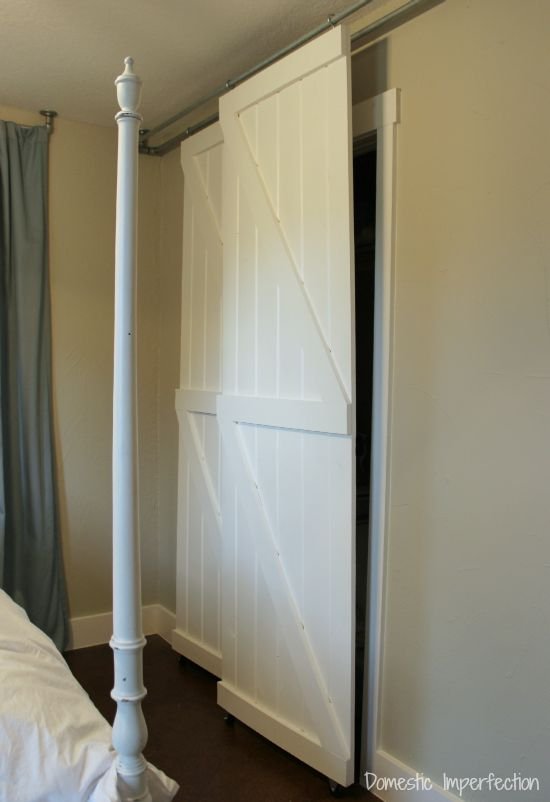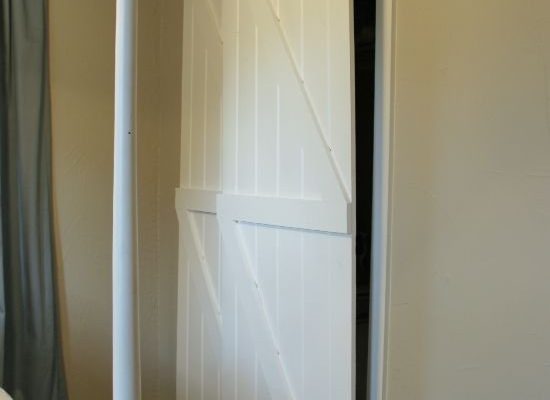
So why does this happen? Just like a car needs maintenance to run smoothly, your barn door might need some attention, too. Several factors can make a sliding barn door less than cooperative. Whether it’s misaligned hardware, debris in the track, or even weather changes affecting the wood, there are solutions to get that door gliding effortlessly again.
Let’s dive into the nitty-gritty of troubleshooting and fixing a sliding barn door that’s giving you a hard time. This guide will walk you through the common causes and practical fixes, making it easy to get back to enjoying your beautiful door.
Check for Misalignment
Misalignment is one of the most common reasons a sliding barn door becomes difficult to move. Much like a train on its tracks, if the door isn’t aligned correctly, it won’t slide smoothly. Over time, the weight of the door or changes in humidity can shift the hardware.
To check for misalignment, start by observing the door while you move it. Is it crooked or rubbing against the frame? If so, you’ll want to take a closer look at the track and the rollers. Make sure the roller brackets are secure and properly positioned. You might need to adjust the height of the rollers by tightening or loosening the screws.
If the door isn’t level, it can lead to even more significant issues down the line. You can use a level tool to identify any discrepancies and adjust accordingly. Fixing misalignment is often as simple as a few twists of a screwdriver—most DIYers can handle this with ease.
Inspect the Track for Debris
Have you ever tried to slide an object across a dirty surface? It just doesn’t work well. Similarly, if there’s dirt, dust, or debris in the track of your barn door, it can create resistance, making it hard to slide.
Take a good look at the track. Is it clean? If not, grab a soft cloth or a brush to clear away any gunk. A vacuum cleaner can also help, especially if there’s buildup in the corners. You’d be surprised at how even a little debris can make a door feel heavy.
Once the track is clean, consider applying a silicone lubricant. This can help the door glide smoothly along the track, much like oiling a squeaky hinge. Just be careful not to overdo it, as excessive lubricant can attract more dirt.
Check the Rollers and Hardware
The rollers and hardware on your barn door are crucial for smooth operation. Over time, these components can wear out or break, leading to difficulty when moving the door.
Start by inspecting the rollers. Are they damaged or cracked? If so, it might be time to replace them. Most hardware stores carry compatible replacements for common roller types.
Also, take a look at the screws and brackets that hold the door in place. If any of them are loose, the door could be wobbling or dragging. Tightening these can make a big difference. Just make sure you don’t overtighten, as that can lead to other issues.
Consider Environmental Changes
You might be wondering how changes in the environment could affect your sliding barn door. Well, wood can expand and contract based on humidity and temperature. In the winter, your lovely barn door might swell due to increased moisture levels, causing it to stick.
If you think this is the case, try to identify any recent weather changes. If the door feels sticky at certain times of the year, you might need to adjust how you care for it. Regularly check for moisture buildup and consider using a dehumidifier to keep the area dry.
In some cases, you may even need to sand down areas that are swollen. A little bit of fine-grit sandpaper can work wonders, allowing your door to move freely without much trouble.
Lubricate the Moving Parts
Just like a car needs oil to run smoothly, a sliding barn door benefits from regular lubrication. If your door is hard to move, it might be time for a little TLC with a lubricant.
Start by choosing a silicone-based spray or a similar product that won’t attract dirt. Carefully spray the rollers and the track. Make sure you wipe off any excess to avoid a sticky mess. This simple step can significantly improve how your door slides.
Incorporating regular lubrication into your maintenance routine can prevent future issues. Think of it as a little spa day for your door—everyone deserves a bit of pampering now and then!
Evaluate the Door’s Weight
Heavy barn doors are beautiful, but they also come with their own set of challenges. If your door feels particularly heavy, it might be worth evaluating its weight and the hardware being used to support it.
Every sliding door system has a weight limit, and exceeding that can cause all sorts of issues. If you’ve recently swapped out the door for a heavier one, your current track and roller system might not be up to the task.
You can fix this by upgrading your hardware to one specifically designed for your door’s weight. Most manufacturers provide guidelines indicating what weight their hardware can handle. This can save you time and hassle down the line.
Seek Professional Help If Needed
If you’ve tried everything and your sliding barn door is still giving you trouble, don’t hesitate to reach out for professional help. Sometimes, a minor issue can turn into a major headache if not addressed properly.
A carpenter or handyman with experience in barn door installations can assess the situation in no time. They can identify issues you might have missed and provide solutions tailored to your specific door and setup.
Think of it as an investment in your home. After all, a beautifully functioning barn door can enhance your space and make everyday life just a bit easier.
In conclusion, troubleshooting a sliding barn door that is difficult to move doesn’t have to be daunting. With a bit of patience and a clear understanding of the common issues, you can have your door sliding smoothly in no time. Remember to check for misalignment, inspect the track, and consider environmental factors. And if all else fails, don’t hesitate to call in the pros. Happy sliding!
